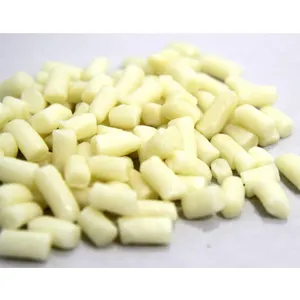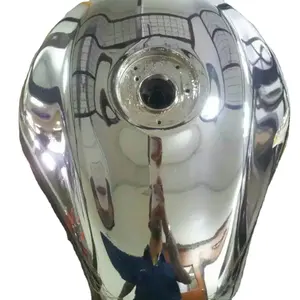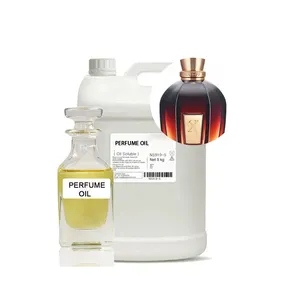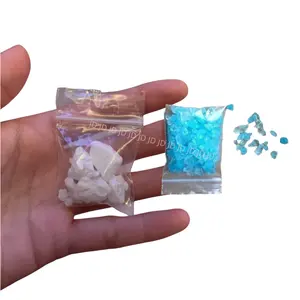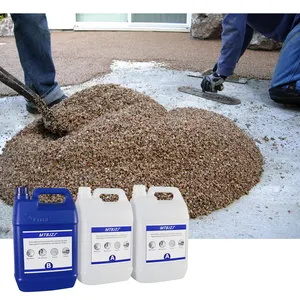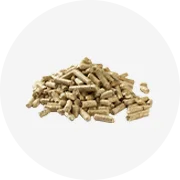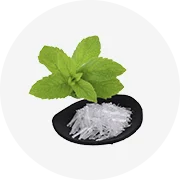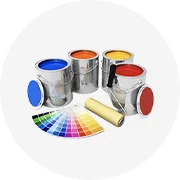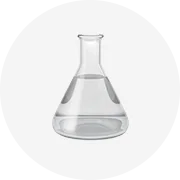Populaire dans votre secteur d’activité






Pigment phosphorescent qui brille dans le noir, Pigment lumineux, couleur fluorescente
9,27 € - 37,08 €
Commande minimale: 1 kilogramme






Rouleaux de Film extensible à haute dureté LLDPE, en plastique noir, fabriqué en chine, pièces
0,0927 € - 1,53 €
Commande minimale: 1000 kilogrammes



Le S-1086 organique le plus efficace de pérylène cas:83524-75-8 pigment noir 32 utilisé dans la salle de construction de peinture de voiture
106,61 € - 120,51 €
Commande minimale: 1 kilogramme







Vente en gros de pérylène organique N ° CAS 83524-75-8 pb 32 pigment noir 32 pour peintures et revêtements
0,4635 € - 1,40 €
Commande minimale: 50 grammes







Pigment d'oxyde de fer rouge/jaune/noir/vert/bleu pour brique Pigment pour béton Vente en gros
0,7231 € - 1,19 €
Commande minimale: 2 kilogrammes
Expédition par pièce: 27,81 €







Shengzhu Fluorescent Pigment Mica Poudre Nail Couleur Pigment Résine Époxy Pigment Photochromique
0,1854 € - 1,29 €
Commande minimale: 100 grammes





Mélange maître noir de noir de carbone de la couleur 40% de concentration de pigment fabriqué en Inde pour les articles en plastique PP PE LDPE HPDE
1,11 € - 1,85 €
Commande minimale: 1 kilogramme






Pigments noirs cirés, vente en gros, économique, à bas prix
2,14 € - 2,32 €
Commande minimale: 100 kilogrammes






Peroxyde de fer au peroxyde de fer, couleur d'origine, inde, 3/noir, prix du oxyde de fer
259,56 € - 296,64 €
Commande minimale: 25 tonnes






Oxyde de fer type/oxyde rouge prix inde/paillis coloré pigment
607,18 € - 698,95 €
Commande minimale: 1 tonne





Appareil de coloration en oxyde de fer, vente à chaud en inde
630,35 € - 908,44 €
Commande minimale: 10 tonnes métriques





Oxyde de fer rouge 130 bleu 886 noir 330 jaune 313 vert brun poudre prix oxyde de fer pigment pour béton brique cosmétiques peinture
584,00 € - 630,35 €
Commande minimale: 1 tonne
Expédition par pièce: 129,78 €
Recherches associées:
pigment rouge cochenillepigment azo pour matières plastiquespigment outremer pour matières plastiquespigment chromaflairtpr pigment de couleur pour le plastiquepigment goochiepigment daviques tinapigment noir pour le plastiquecfr pigmentpigment pour inderouge pigment clariantpigment rouge 179pigment chromaflair spectraflairpigment de couleur luminent pour le plastiquepigment luminophore






Oxyde de fer synthétique rouge 130 bleu 886 noir 330 jaune 313 vert brun poudre Pigment pour béton brique cosmétiques peinture
0,4635 € - 1,40 €
Commande minimale: 1 kilogramme





Poudre de pigment d'oxyde noir mat | Poudre de mica noir, poudre d'oxyde noir, poudre de mort mate d'oxyde de fer noir en gros
44,49 € - 58,40 €
Commande minimale: 2 kilogrammes




Matériau de qualité fine Pâte de couleur antistatique Pigment PâTE NOIRE Pigment ÉMULSION NOIRE avec service personnalisé disponible
4,55 € - 5,75 €
Commande minimale: 500 kilogrammes






Fournisseur en vrac de pigments noirs au prix le plus bas du fabricant indien Fournisseur indien de qualité industrielle
1,95 € - 2,32 €
Commande minimale: 100 kilogrammes






Offre Spéciale oxyde de fer jaune rouge 130 bleu 886 noir 330 vert brun poudre oxyde de fer pigment pour béton brique cosmétiques peinture
537,65 € - 630,35 €
Commande minimale: 1 tonne






Pigment synthétique oxyde rouge pour briques de béton, 20g, 130 120 190, 110
605,32 € - 703,58 €
Commande minimale: 1 tonne






Oxyde de fer rouge 130 bleu 886 noir 330 jaune 313 vert brun poudre prix oxyde de fer pigment pour béton brique cosmétiques peinture
0,3708 € - 1,12 €
Commande minimale: 1 kilogramme
Expédition par pièce: 64,89 €





Poudre de pigment d'oxyde brun mat | Poudre de pigment brun, poudre brun mat, poudre de pigment d'oxyde en gros
44,49 € - 58,40 €
Commande minimale: 2 kilogrammes




Mélange maître de pigments colorants noirs de carbone de qualité supérieure 25%-60% pour une gamme d'applications comprenant des films et des tissus pour réservoirs de tuyaux
0,6397 € - 1,85 €
Commande minimale: 1 kilogramme




Matériau de haute qualité Anti Statique Couleur Pâte Pigment Pâte Noire Pigment ÉMULSION NOIRE de l'exportateur indien
4,55 € - 5,75 €
Commande minimale: 500 kilogrammes












Offre Spéciale oxyde de fer jaune oxyde de fer rouge 130 bleu 886 noir 330 pigment d'oxyde de fer pour béton brique cosmétiques peinture
537,65 € - 630,35 €
Commande minimale: 1 tonne











Pâte de couleur époxy couleur personnalisée Pigment Pâte noire Pigment émulsion noire de l'exportateur indien
4,55 € - 5,75 €
Commande minimale: 500 kilogrammes












Carrelage en fer inbiologique, pigment en oxyde rouge, prix en inde pour l'extérieur, ciment
605,32 € - 819,45 €
Commande minimale: 1 tonne






Noir de carbone N220, N330, N774, N550, N660 pour les produits en caoutchouc pour l'Inde
556,19 € - 1 390,47 €
Commande minimale: 1 tonne






Offre spéciale noir réactif 31 noir réactif pour tissu d'encre coton CAS 12731-63-4 coton impression teinture
6,49 € - 7,42 €
Commande minimale: 500 kilogrammes






Nouveau pigment de noir de carbone de prix usine de qualité industrielle, meilleure stabilité alcaline, pigments noirs provenant d'un fournisseur indien
0,927 € - 2,32 €
Commande minimale: 100 kilogrammes






Noir de carbone en poudre de charbon actif noir de carbone d'usine pour les marchés de l'Inde et du Bangladesh
556,19 € - 926,98 €
Commande minimale: 100 tonnes






Noir réactif 31 noir réactif pour tissu d'encre coton CAS 12731-63-4 coton impression teinture
6,49 € - 7,42 €
Commande minimale: 500 kilogrammes






Pigments noirs avec durée de conservation de qualité industrielle Hot Selling Industry Grade New Industry Grade
2,14 € - 2,32 €
Commande minimale: 100 kilogrammes






Noir de carbone en vrac Surface élevée Poudre de charbon actif Noir de carbone conducteur pour l'inde
556,19 € - 926,98 €
Commande minimale: 100 tonnes





Couleurs acryliques Flash 200ml, ensemble Non toxique pour les enfants et les artistes, qualité supérieure, vente en gros, couleurs acryliques pour artistes
1,30 € - 1,49 €
Commande minimale: 100 jeux






Vente chaude réactif noir 31 réactif noir pour encre tissu coton CAS 12731 coton impression teinture
6,49 € - 7,42 €
Commande minimale: 500 kilogrammes
Meilleures catégories
Concernant pigment noir pour le plastique en inde
Découvrez la collection complète de pigment noir pour le plastique en inde sur Alibaba.com. Ils sont disponibles sous des formes naturelles et synthétiques. pigment noir pour le plastique en inde sont appliqués dans un éventail d'industries pour un groupe de minéraux, ce qui les rend polyvalents.
pigment noir pour le plastique en inde sur Alibaba.com sont bien adaptés aux secteurs de l'isolation et des cosmétiques. Ils sont utilisés dans les crèmes, les fonds de teint, les ombres à paupières, etc. Ces produits permettent une meilleure couverture des écrans solaires et des hydratants car ils ont une sensation douce et lisse. Ce sont des substances de haute pureté dans de nombreuses variantes comme la muscovite, la phlogopite, etc. Ils sont disponibles dans des teintes blanc laiteux et métalliques, ce qui les rend appropriés pour les pigments nacrés. Ils n'ont pas de toxines car ils sont exempts de métaux lourds. Ils sont utiles dans l'industrie du caoutchouc comme lubrifiants et sont pratiques pour les colorants dans les peintures et réduisent la pénétration de l'eau et les intempéries.
pigment noir pour le plastique en inde sont disponibles sous forme de plaques, de tubes et de flocons en poudre. Décorez les maisons avec des panneaux de fenêtres ornés et des cadres comprenant ces produits. Ces substances sont résistantes aux acides et aux alcalis, ce qui les rend stables pour une utilisation dans des applications à haute température et haute tension. Ils sont ajoutés aux céramiques en raison de leur haute résistance à la chaleur. Ces produits sont légers et relativement doux, ce qui en fait le choix idéal pour les gaines isolantes. Ils agissent comme agents de remplissage et de renforcement dans la fabrication de produits en plastique et de papier.
Saisissez des offres rentables sur pigment noir pour le plastique en inde sur Alibaba.com. Les fournisseurs et grossistes enregistrés offrent d'excellents produits à des prix compétitifs et avantageux pour tous les types de budget. Bénéficiez des avantages supplémentaires des réductions incroyables sur les achats en gros sur le site.
pigment noir pour le plastique en inde sur Alibaba.com sont bien adaptés aux secteurs de l'isolation et des cosmétiques. Ils sont utilisés dans les crèmes, les fonds de teint, les ombres à paupières, etc. Ces produits permettent une meilleure couverture des écrans solaires et des hydratants car ils ont une sensation douce et lisse. Ce sont des substances de haute pureté dans de nombreuses variantes comme la muscovite, la phlogopite, etc. Ils sont disponibles dans des teintes blanc laiteux et métalliques, ce qui les rend appropriés pour les pigments nacrés. Ils n'ont pas de toxines car ils sont exempts de métaux lourds. Ils sont utiles dans l'industrie du caoutchouc comme lubrifiants et sont pratiques pour les colorants dans les peintures et réduisent la pénétration de l'eau et les intempéries.
pigment noir pour le plastique en inde sont disponibles sous forme de plaques, de tubes et de flocons en poudre. Décorez les maisons avec des panneaux de fenêtres ornés et des cadres comprenant ces produits. Ces substances sont résistantes aux acides et aux alcalis, ce qui les rend stables pour une utilisation dans des applications à haute température et haute tension. Ils sont ajoutés aux céramiques en raison de leur haute résistance à la chaleur. Ces produits sont légers et relativement doux, ce qui en fait le choix idéal pour les gaines isolantes. Ils agissent comme agents de remplissage et de renforcement dans la fabrication de produits en plastique et de papier.
Saisissez des offres rentables sur pigment noir pour le plastique en inde sur Alibaba.com. Les fournisseurs et grossistes enregistrés offrent d'excellents produits à des prix compétitifs et avantageux pour tous les types de budget. Bénéficiez des avantages supplémentaires des réductions incroyables sur les achats en gros sur le site.
